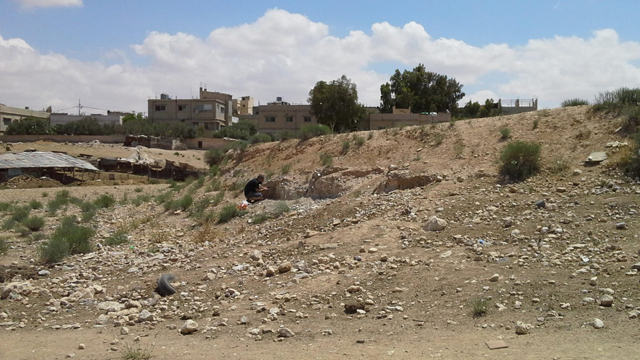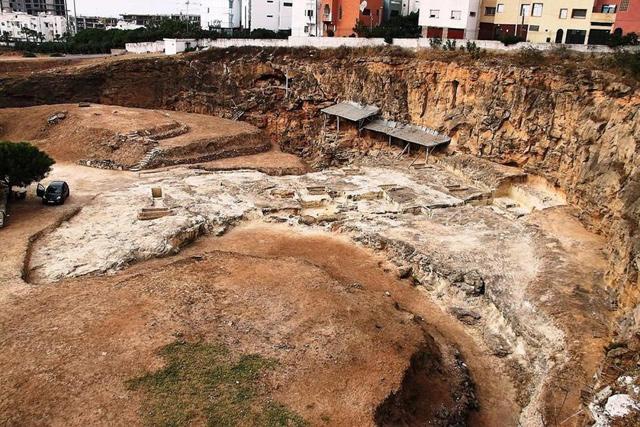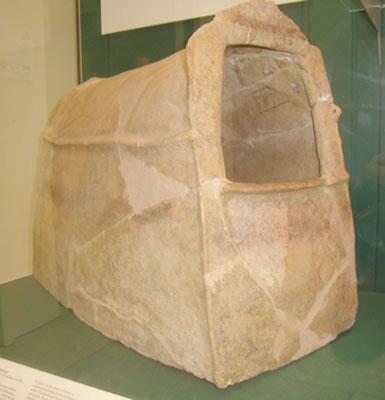You are here
Sukhne allures scholars of prehistory
By Saeb Rawashdeh - Jan 20,2018 - Last updated at Jan 20,2018

Researchers work on the site of Elephant Task, Dhulayl Valley (Photo courtesy of Fabio Parenti)
AMMAN — Sukhne, located in Zarqa Valley some 20km northeast of Amman, is one of the many places in Jordan where scientists study the wealth of the regional past.
According to Italian archaeologist Fabio Parenti, Sukhne is the core of the most important area for the study of prehistory and human evolution eastern of Jordan Valley while also being the oldest deeply stratified archaeological area in Jordan.
“The upper Zarqa Valley allows an interdisciplinary study on prehistory, palaeontology and palaeo environment since the beginning of the Paleistocene, some 2.6 million years ago,” said Parenti, who received his PhD in Prehistoric Archaeology at the Ecole des Hautes Etudes en Sciences Sociale in Paris.
Parenti, who was part of the team led by Professor Gaetano Palumbo between 1993 and 1999 that uncovered important discoveries of fossils in Zarqa, said that a hominid group was present in the valley much before 1 million years ago.
The team research was resumed in 2013, lasting until 2016 under the coordination of Walter Neves, professor of Palaeoanthropology at University of São Paulo, Parenti noted.
“Twenty years ago, we still retained the stratigraphic model proposed by the original discoverers of the site, Francis Hours and Lorraine Copeland, in the 1980s. But, in 2013, thanks to the contribution of our geochronologist Giancarlo Scardia (State University of São Paulo), we adopted a new stratigraphic model, allowing the reinterpretation of the entire depositionary sequence of the valley,” he explained.
Because of this, some outcrops in the north of Sukhne turned out to be much older than previously believed. So, in 2014 and 2015, the researchers performed samplings for dating and conducted test excavations for the recovery of an important assemblage of stone tools of the so-called Oldowan culture, or “mode 1” technology, the oldest artefactual tradition, both inside and outside Africa, Parenti underlined.
“But a more surprising discovery occured in 2015 when Astolfo Araujo, the geo-archaeologist of the team [also from University of São Paulo] was surveying along the Dhulayl River and found a fragmentary elephant tusk just below a basalt layer, dated at 2.5 million years ago,” he said.
According to Parenti, the tusk is not associated to any cultural material, but is certainly the oldest Pleistocene mammalian remain ever recovered in Jordan, a land very penurious in vertebrate fossils.
“We tried to recover the tusk, bust its situation and its scanty conditions prevented any success,” he noted.
The 2015 campaign was very successful both in archaeological and palaeontological terms; but, certainly, the main result has been the possibility of applying new dating techniques to these old sites, possibly the oldest in the whole Near East, the scholar highlighted.
“In the future, with the publication of the scientific paper on the chronology and stratigraphy of the Sukhne sector of the valley, we hopefully plan to restart the researches in three directions: the palaeo environmental reconstruction of the last 3 million years, the study of the formation of the archaeological deposits and the search of new fossils, possibly of the makers of the incredibly rich stone tool assemblage,” Parenti concluded.
Related Articles
AMMAN — At the confluence of the Zarqa and Dulayl rivers, north and west of the town of Sukhna, near Zarqa, many sections have been excavate
RABAT — Archaeologists in Morocco have announced the discovery of North Africa’s oldest Stone Age hand-axe manufacturing site, dating back 1
AMMAN — Both banks of the Jordan Valley were occupied from Prehistory to modern times, as populations were moving from east to west and vice
















